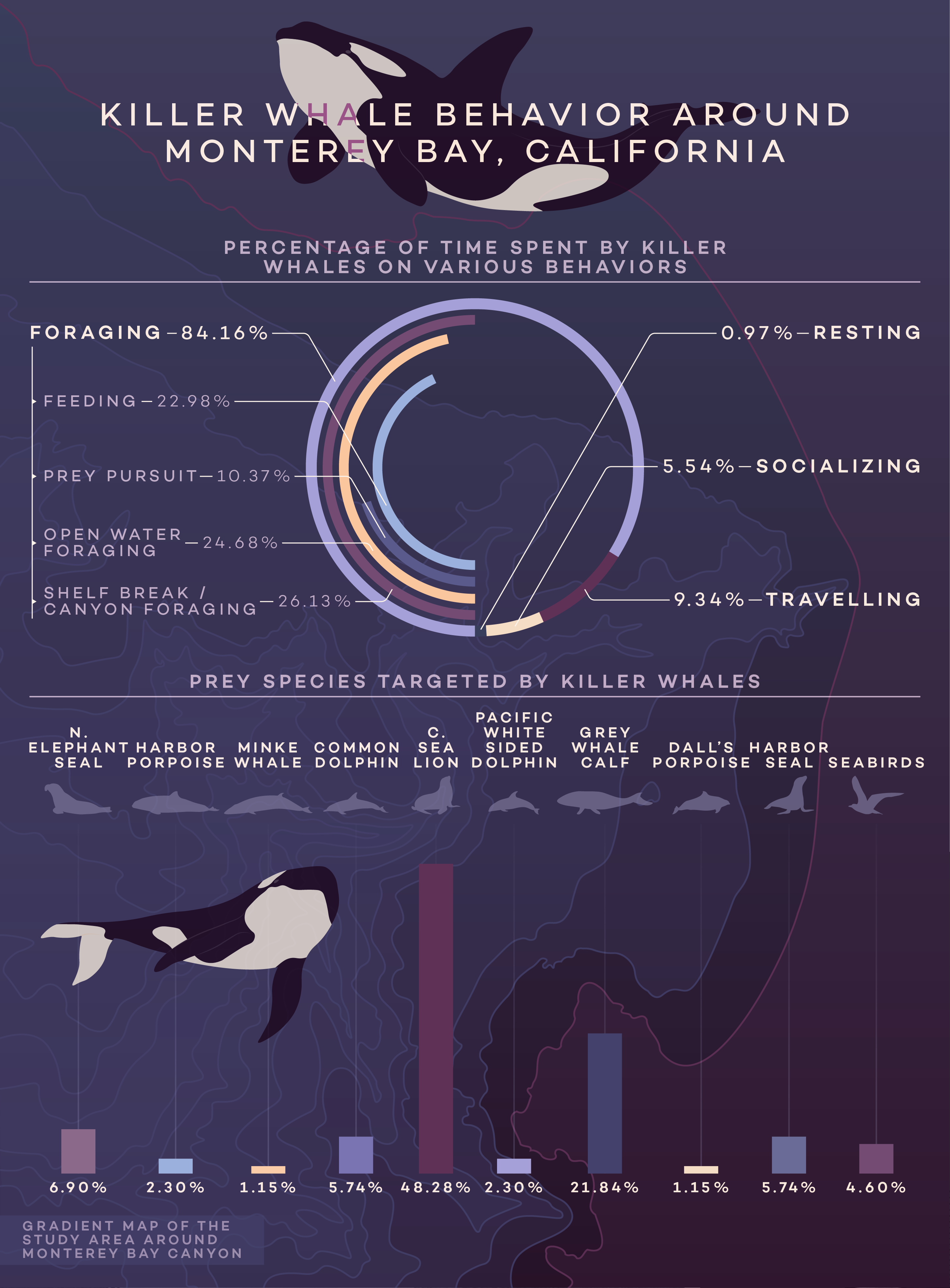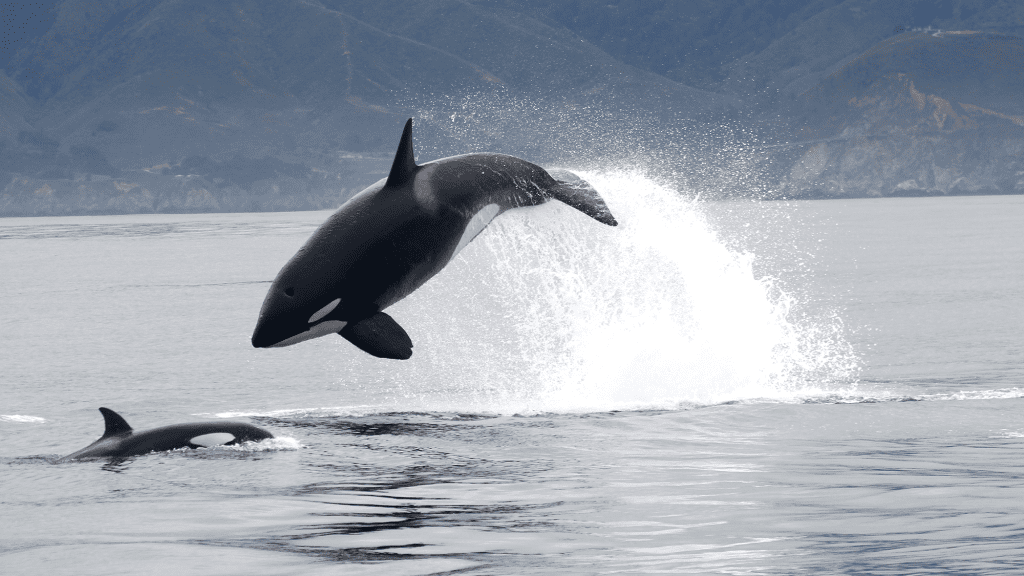A particular group of orca whales is using special hunting methods to catch the marine animals they eat. Orca, also known as killer whales, are at the top of the food chain and have been seen attacking great white sharks. They live in all oceans and their food preferences are influenced by the specific environments they inhabit. The killer whales near the deep submarine canyons off the California coast may use the sloping seascape to inform their hunting techniques. These findings are described in a study published on March 20 in the open-access journal 'Residents vs. transients'. top predators sharks, porpoises, and even blue whales PLOS ONE.
Groups of orca whales can form different populations or ecotypes. They have their own social structures, food preferences, and hunting techniques. , like the
[Related: An orca whale was observed hunting and killing a great white shark by itself for the first time..]
The other type of killer whales known as 'transient killer whales' specialize in hunting marine mammals. Transients are typically slightly larger than resident orcas and have a more pointed dorsal fin.
The transients that forage in the Northern Pacific Ocean can be further divided into two groups. The inner coast whales feed in shallow coastal waters, while outer coast whales hunt in deeper water. Most studies have focused on the orcas that hunt closer to shore, and not much is known about the foraging techniques for the more offshore whales, such as those near the Monterey Submarine Canyon in California.
McInnes and his team studied the outer coast transient killer whales that forage around the undersea Monterey Canyon, which is one of the deepest in the United States. They collected and analyzed data from marine mammal surveys conducted between 2006 and 2018, as well as whale-watching ecotours between 2014 and 2021. The whales primarily ate California sea lions, gray whale calves, and northern elephant seals. gathered and examined data

However, if they were exploring the deep underwater canyons and shelf-breaks, groups of whales would search for food following the shape of the canyon. The group would also come up to the surface at the same time.
According to McInnes, both hunting behaviors seem to be different for these whales compared to other transient groups that hunt in shallow water.
[Related: It is very costly for orca mothers to raise male offspring..]
“Their ability to find and follow the shape of the canyon was unexpected based on our close observations,” says McInnes. “We think that transient killer whales hunting in underwater canyons may listen to water coming up along the continental slope or shelf-break.”
Ramming or punting sea lions
The orcas also use special methods if their prey couldn’t be easily trapped in open water. They subdued their prey by ramming into them with their head or body–as some orca do to boats. The whales also used their powerful tails to hit or launch sea lions out of the water and into the air.
McInnes and the team believe that these outer coast whales are a distinct subgroup that has developed these hunting techniques in such a deep water habitat. It’s also possible that these hunting behaviors may be passed down through generations. The team was surprised by their preference for areas along the slopes of the canyon and shelf-break and how much time they spent foraging and feeding. Transient killer whales in Monterey Bay, California spend 84 percent of daylight hours foraging (searching, pursuing, and feeding), which is a significant amount of time,” says McInnes. “Feeding appears to be related to the size of prey these whales tackle, with long hunts involving gray whale calves and California sea lions.” McInness also mentioned the team “really appreciate” any photographs or sightings of killer whales. Images of killer whales can be sent to
A unique subgroup of transient killer whales changes their techniques depending on the seascape. [email protected].









